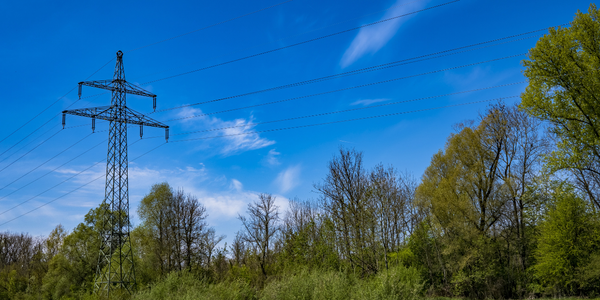公司规模
Large Corporate
国家
- Worldwide
产品
- Google Analytics
技术栈
- Google Analytics
实施规模
- Enterprise-wide Deployment
影响指标
- Brand Awareness
- Customer Satisfaction
技术
- 分析与建模 - 实时分析
适用功能
- 销售与市场营销
用例
- 需求计划与预测
服务
- 数据科学服务
关于客户
费尔蒙酒店及度假村是一家豪华酒店公司,在全球拥有 60 多家特色酒店和度假村。该公司使用 Twitter 等社交媒体渠道来提高优惠的知名度,并为其投资组合中的网站带来流量。他们面临的挑战是如何准确识别和跟踪由他们的推文产生的网站流量,因为许多 Twitter 用户不使用 Web 界面,而是使用众多可用的桌面客户端或移动应用程序之一。此外,在 Twitter 上发布的链接可能会通过电子邮件或短信转发,导致本应归因于 Twitter 活动的流量被报告为直接或其他引荐流量。
挑战
费尔蒙酒店及度假村是一家豪华酒店公司,在全球拥有 60 多家特色酒店和度假村,该公司希望优化其社交媒体营销工作。该公司使用 Twitter 来提高优惠的知名度,并为其投资组合中的网站带来流量。然而,他们面临着准确识别和跟踪其推文产生的网站流量的挑战。这是因为 Twitter 流量的很大一部分并非源自 twitter.com;许多 Twitter 用户不使用 Web 界面,而是使用众多可用的桌面客户端或移动应用程序之一。此外,在 Twitter 上发布的链接可能会通过电子邮件或短信转发。在所有这些情况下,任何理论上应归因于 Twitter 活动的流量都将被报告为直接或其他引荐流量。
解决方案
Fairmont Hotels & Resorts 通过使用 Google Analytics 的广告系列跟踪变量解决了这个问题。这些变量允许他们标记他们的链接,以便 Google Analytics 可以识别和衡量将访问者带到其网站的非 AdWords 广告系列。当将广告系列跟踪变量应用于 Fairmont 推文中的任何链接时,无论访问者在哪里找到并点击链接,这些推文产生的流量都会正确归因于相应的推文。为了保持链接简短,避免在 140 个字符的消息中浪费宝贵的字符,Fairmont 的团队使用了免费的 URL 缩短服务,例如 goo.gl。Google Analytics 允许 Fairmont 比较他们自己的活动产生的 Twitter 流量的质量和增长率与从 Twitter 获得的“有机”流量。由于每个 Twitter 帖子都带有唯一标记,他们可以查看每个帖子的表现,首先选择所选的流量渠道,然后选择特定的广告系列。
运营影响
数量效益

Case Study missing?
Start adding your own!
Register with your work email and create a new case study profile for your business.
相关案例.
Case Study
Pepsico's Transformation to Smarter Sales Forecasting with Designer Cloud
PepsiCo, a global consumer packaged goods company, faced a significant challenge in calibrating sales forecasting to supply the right product quantities to its retailers. The sales forecast incorporated a variety of data, including warehouse data, store stock data, and promotional forecast data, all of which were provided by retailers in different file formats and delivered using various methods. The primary challenge was the speed of preparing a sales forecast. With the existing Microsoft Access and Excel-based processes, the time required to prepare this data was so extensive that analysts could only leverage it once a month or not at all. This inefficiency risked under or oversupplying retailers, potentially impacting PepsiCo's business operations and customer relationships.

Case Study
Gexa Energy and AutoGrid's Innovative Demand Response Programs in ERCOT
Gexa Energy, a leading retail electricity provider in Texas, was seeking to introduce new demand response programs for its commercial and industrial customers in the Electric Reliability Council of Texas (ERCOT) market. The challenge was to provide a platform that would allow these customers to lower their energy bills by adjusting their energy consumption during peak energy demand or high wholesale electricity prices. The solution needed to be intelligent, scalable, and offer both manual and automated options for adjusting energy consumption. The demand response programs needed to include Emergency Response Service (ERS), Real-Time Price Response (RTPR), and 4 Coincident Peak (4CP).

Case Study
ZettaNet's Agile Juniper Network Meets Booming Digital Demand in Australia
ZettaNet, a privately-held company based in Perth, Australia, was facing a significant challenge due to the exponential demand for enterprise network, data center, and cloud services in the region. The company's business growth necessitated an upgrade of their core network to meet the increasing bandwidth requirements of their customers. The customers, which primarily include managed service providers, were demanding 1 Gbps connectivity between locations. These service providers then deliver network, data center, cloud, and voice services to a diverse range of customers including local businesses, schools, hospitals, residential communities, and government offices in Western and Southern Australia. The challenge for ZettaNet was to meet this high-capacity network services demand while maintaining profitability.
Case Study
Procter & Gamble Implements Terra Technology's Demand Sensing for Improved Forecast Accuracy
Procter & Gamble (P&G) faced significant challenges in accurately forecasting short-term demand for their consumer products. Their existing 24-month forecast provided a good overview for monthly or weekly production, but it was insufficient for the immediate needs of supply chain planning and manufacturing teams. These teams required a short-term forecast to plan production effectively and avoid 'fire-fighting' practices. P&G needed a solution that could provide accurate short-term demand forecasts to ensure agility and flexibility in manufacturing, especially for products with very short production and order lead times. The company explored various solutions but found that most big software companies lacked the agility to meet their specific demand sensing needs. Terra Technology's Real-Time Forecasting, later known as Demand Sensing (DS), emerged as a promising solution due to its specialized focus on consumer packaged goods (CPG) demand planning and forecasting.
Case Study
MARS Incorporated: Leading a Global Digital Transformation
MARS Incorporated, a multinational manufacturer, faced significant challenges in digitizing and standardizing processes across its mid-markets globally. The company's reliance on legacy solutions necessitated continuous, time-consuming upgrades and made data compilation and comparison across different regions and business units difficult. Excel spreadsheets were extensively used for forecasting in smaller markets, leading to disconnected processes, siloed working environments, and increased risk of data inconsistencies and inaccuracies in demand forecasting. MARS also struggled with a lack of visibility across its midmarket footprint, scattered critical data across various systems and spreadsheets, a low degree of automation, and insufficient statistical analytics for demand planning. The absence of a standard process for demand planning made it challenging to consolidate KPIs and gain a comprehensive view of demand trends and supply chain performance.

Case Study
Enterprise AI for Demand Forecasting and Production Scheduling in Global Agribusiness
A global agribusiness and food manufacturer, producing over 80 million pounds of food products per year across eight production lines, faced significant challenges in demand forecasting and production scheduling. The company's only customer, a global retailer, exhibited highly variable demand, leading to discrepancies with the manufacturer's weekly demand forecast. Traditional demand forecasting solutions, based on statistical algorithms, were unable to cope with the short lead times and daily sales orders due to the short shelf life of food products. This resulted in unfulfilled customer orders. Additional rule-based solutions procured to improve production scheduling also failed to optimize schedules and significantly improve manufacturing operations.







